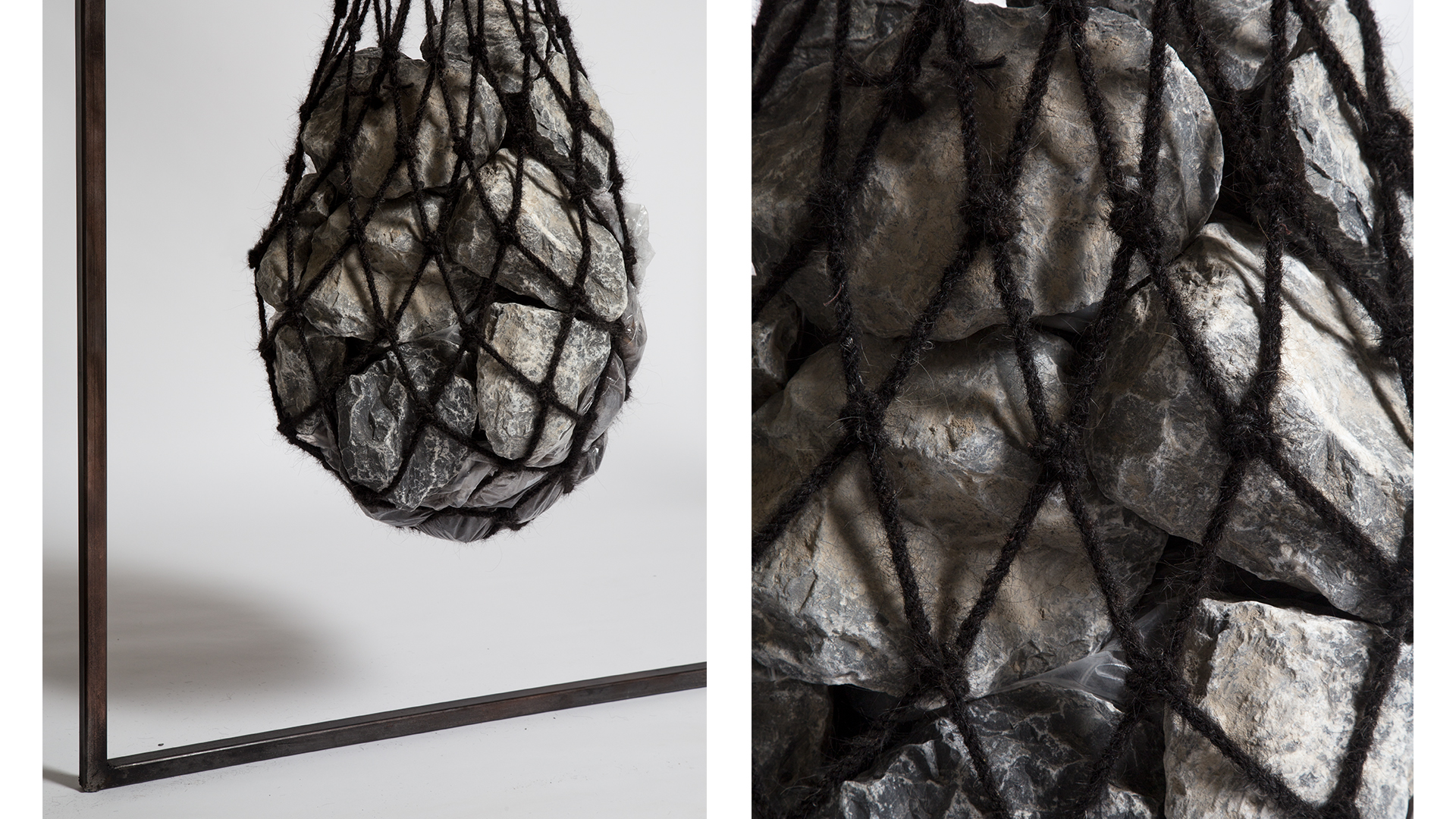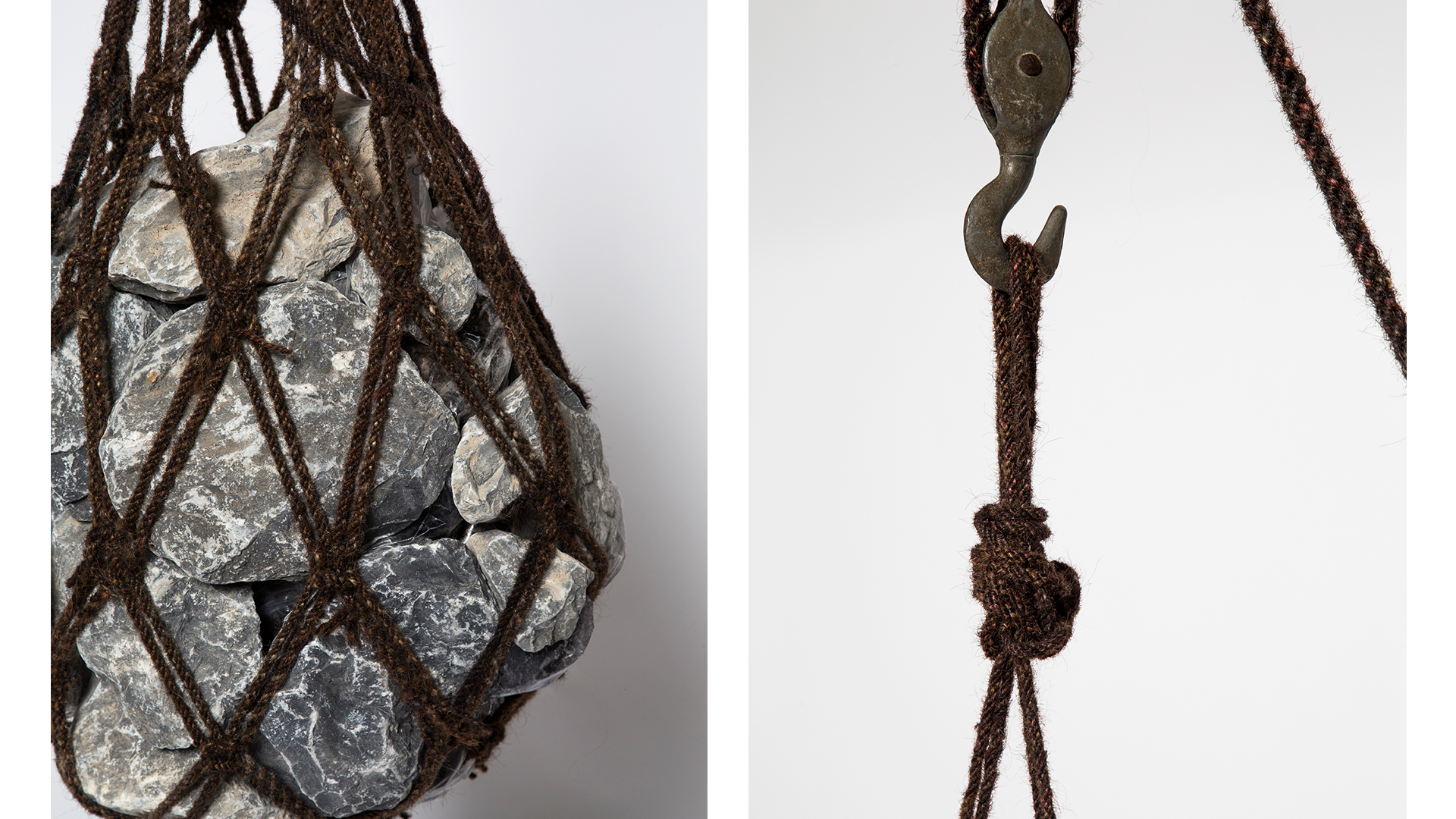The New Age of Trichology
(2016 — present)
 Photography credit: Tom Mannion
Photography credit: Tom MannionThe New Age of Trichology began as a 2016 graduation project by founder Sanne Visser, who was driven by the question: How can we transform human hair waste into new materials and design solutions? What started as a creative exploration has since evolved into a practice that is now at the forefront of circular economy, material innovation, and regenerative design.
With a rising global population , human hair is an abundant, renewable resource. In the UK alone, approximately 6.5 million kilograms of human hair waste is generated annually, most of which ends up in landfills or slowly decays in the environment. This creates significant ecological problems, as it releases toxic methane gases and clogs drainage systems, yet hair itself possesses valuable properties: it is high in tensile strength, lightweight, thermally insulating, oil-absorbent, and highly flexible.
This project explores the pure potential of hair as a raw material, reducing waste, environmental problems and the pressure on other non-renewable materials. The New Age of Trichology consists of a range of utilitarian objects and tools that helps create a system all the way from collection through to the final application.
Collaborators
Diane Fisher, Handspinner, Murmuring Wheel, Sheffield (UK)
Des Pawson, Knot & rope expert, Footrope Knots, Ipswich (UK)
Jurgen Jacob Lodder, Filmmaker, Rotterdam (NL)
Marco Tomesani & Thiago Bon, Sound Design, London (UK)
Diane Fisher, Handspinner, Murmuring Wheel, Sheffield (UK)
Des Pawson, Knot & rope expert, Footrope Knots, Ipswich (UK)
Jurgen Jacob Lodder, Filmmaker, Rotterdam (NL)
Marco Tomesani & Thiago Bon, Sound Design, London (UK)
Experts
Mark Blake, Trichologist, Mark Blake Trichology Ltd.
Dr. Koon-Yang Lee, Lecturer in Composite Materials, Imperial College London
Chris Jones, Ropemaker, Master Ropemakers at Historic Dockyard Chatham
Mark Blake, Trichologist, Mark Blake Trichology Ltd.
Dr. Koon-Yang Lee, Lecturer in Composite Materials, Imperial College London
Chris Jones, Ropemaker, Master Ropemakers at Historic Dockyard Chatham
A closed-loop system for material reuse
Key to The New Age of Trichology is the development of a closed-loop system that transforms hair waste into functional materials, all while ensuring environmental integrity. Utilising existing crafts such as spinning and ropemaking teacniques, in this instance, focused on the tensile strength of human hair to produce durable, utilitarian objects. The process is free of additives (100% hair) , allowing the material to be fullycomposted or recycled at the end of its lifecycle. This regenerative approach reduces the pressure on non-renewable resources, offering a sustainable alternative to conventional materials.
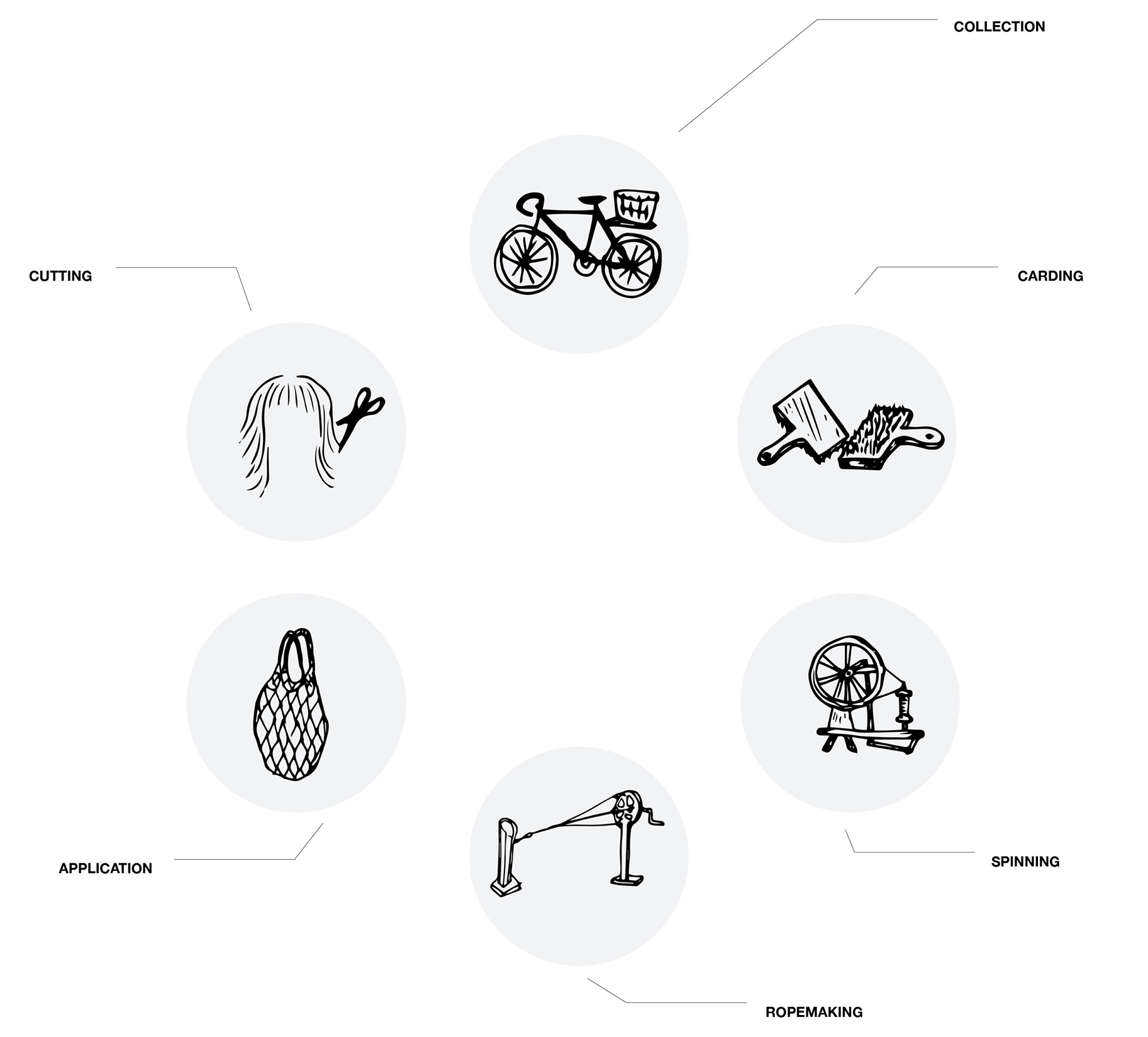
 Since 2016, and as part of The New Age of Trichology, human hair is collected from local hair salons in London to be transformed into innovative materials and products.
Since 2016, and as part of The New Age of Trichology, human hair is collected from local hair salons in London to be transformed into innovative materials and products.Material properties and insights
Human hair is not only available in high volumes but also has unique, valuable properties. For instance, a single strand of hair can support up to 100 grams of weight, with entire heads of hair having the potential to hold up to 12 tonnes, depending on the individual’s health and environmental factors. Different hair types, shaped by ethnicity, have diverse properties: Asian hair is the strongest, while African/Caribbean hair is more fragile but more flexible. These variations open up opportunities for differrent applications based on specific material needs.
As a practice committed to circular economy principles, The New Age of Trichology continues to push the boundaries of material innovation by demonstrating the potential of human hair waste as a sustainable resource for design.

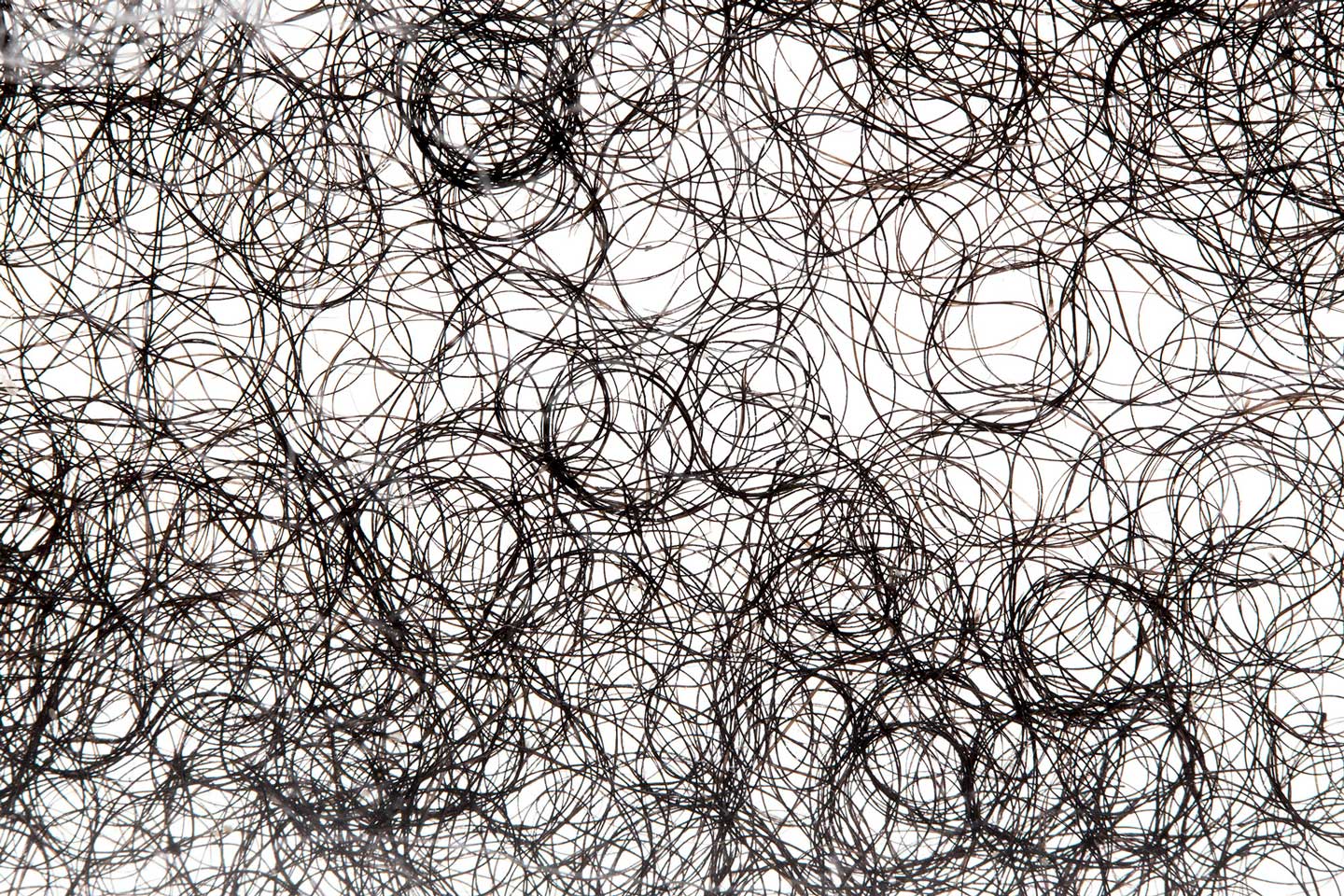
2ply yarn - Asian human hair waste (on average, the yarn has a minimum breaking load of 32kgs)
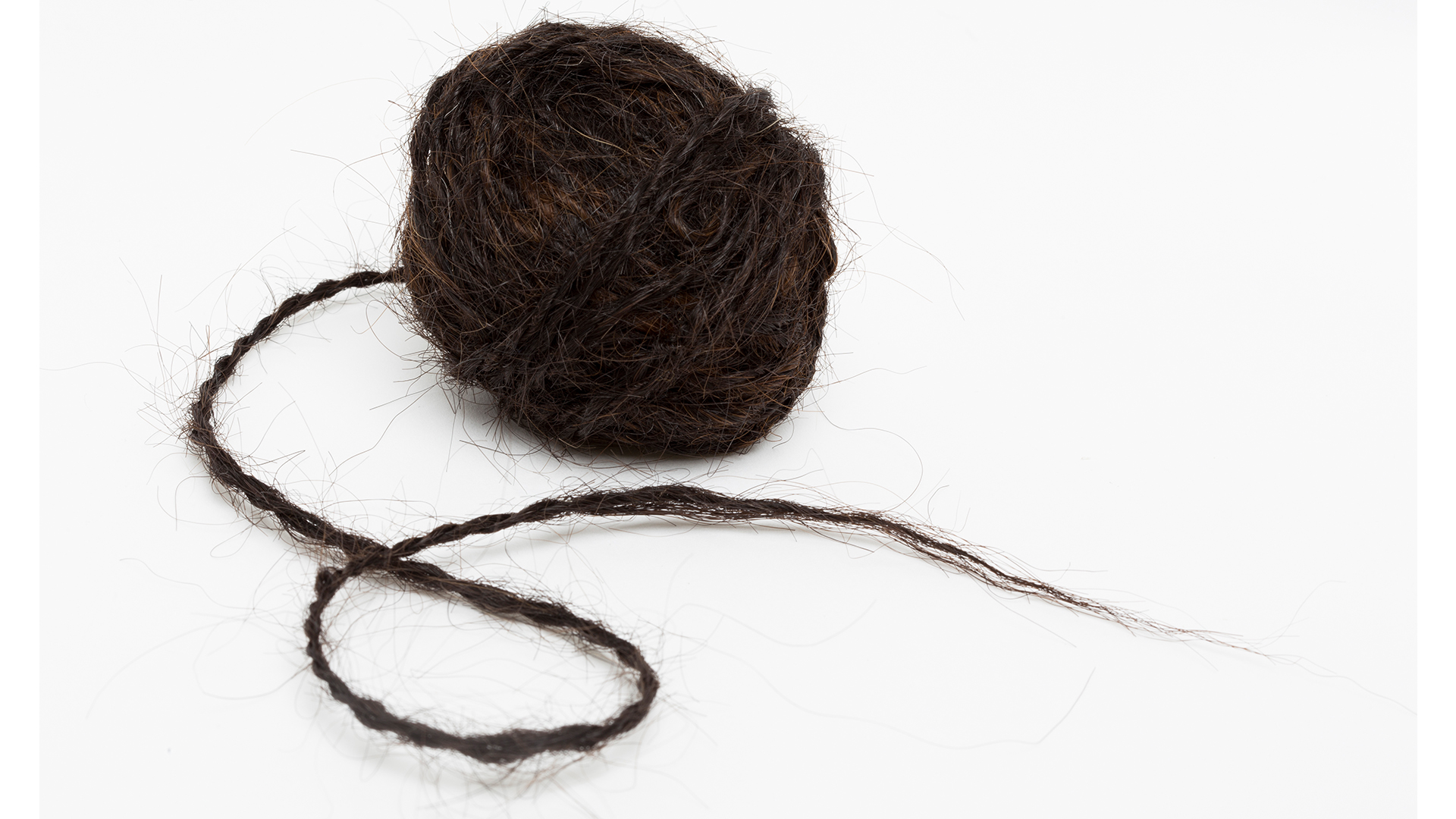
2ply yarn - Caucasian Human hair waste
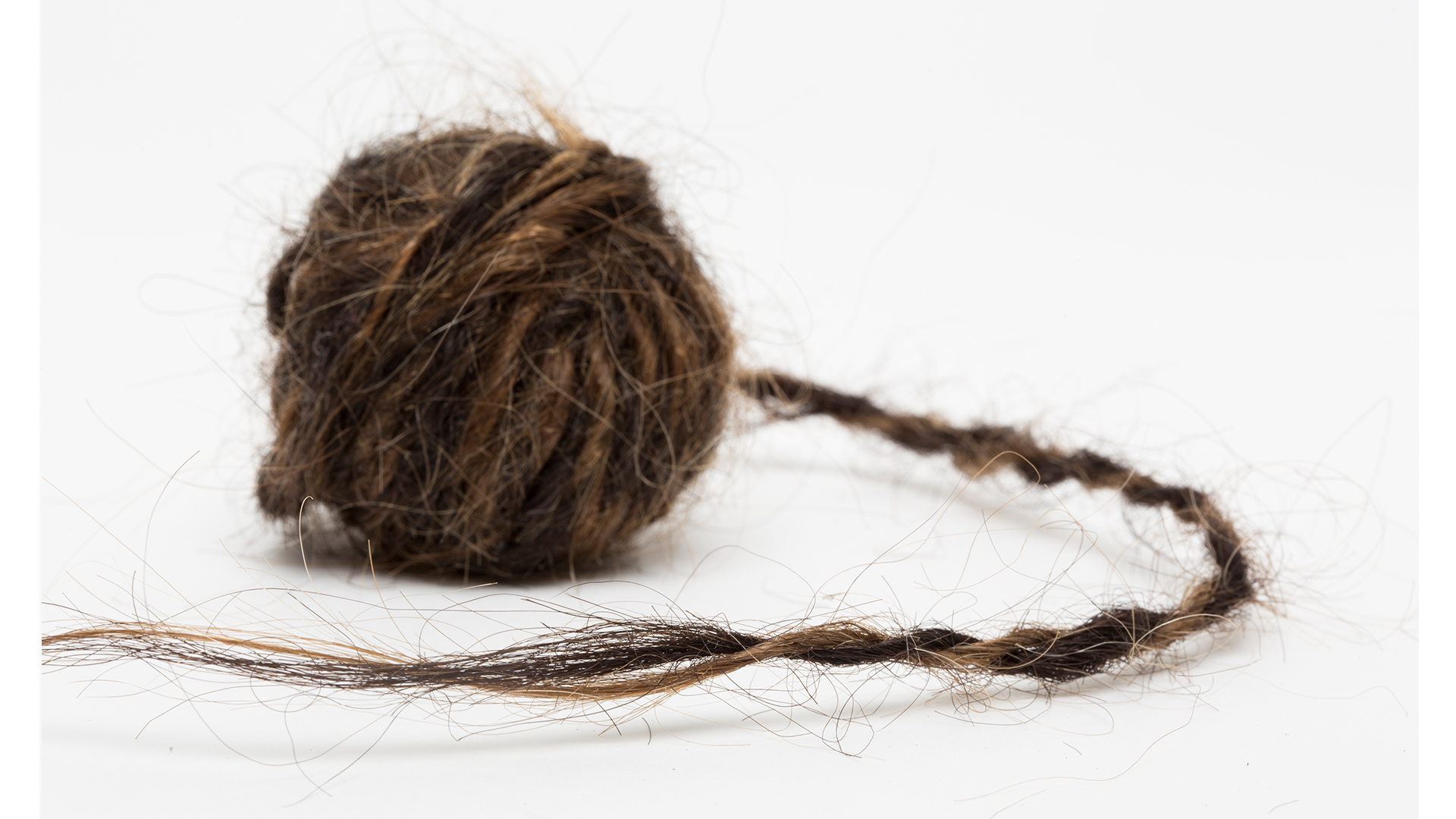
The products below are all made from Asian human hair waste, starting with a 2-ply yarn, which are then turned into ropes of various thicknesses.
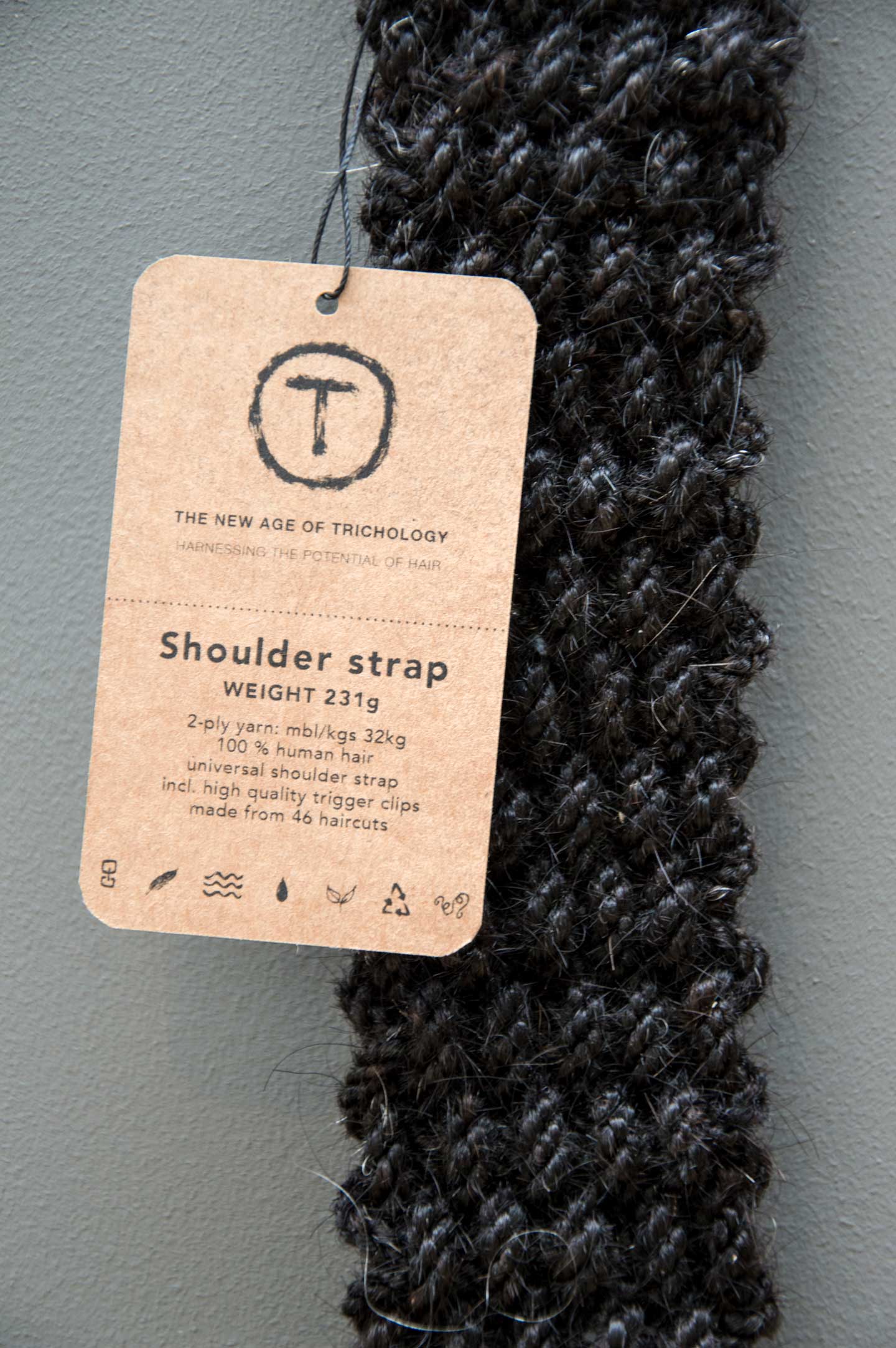
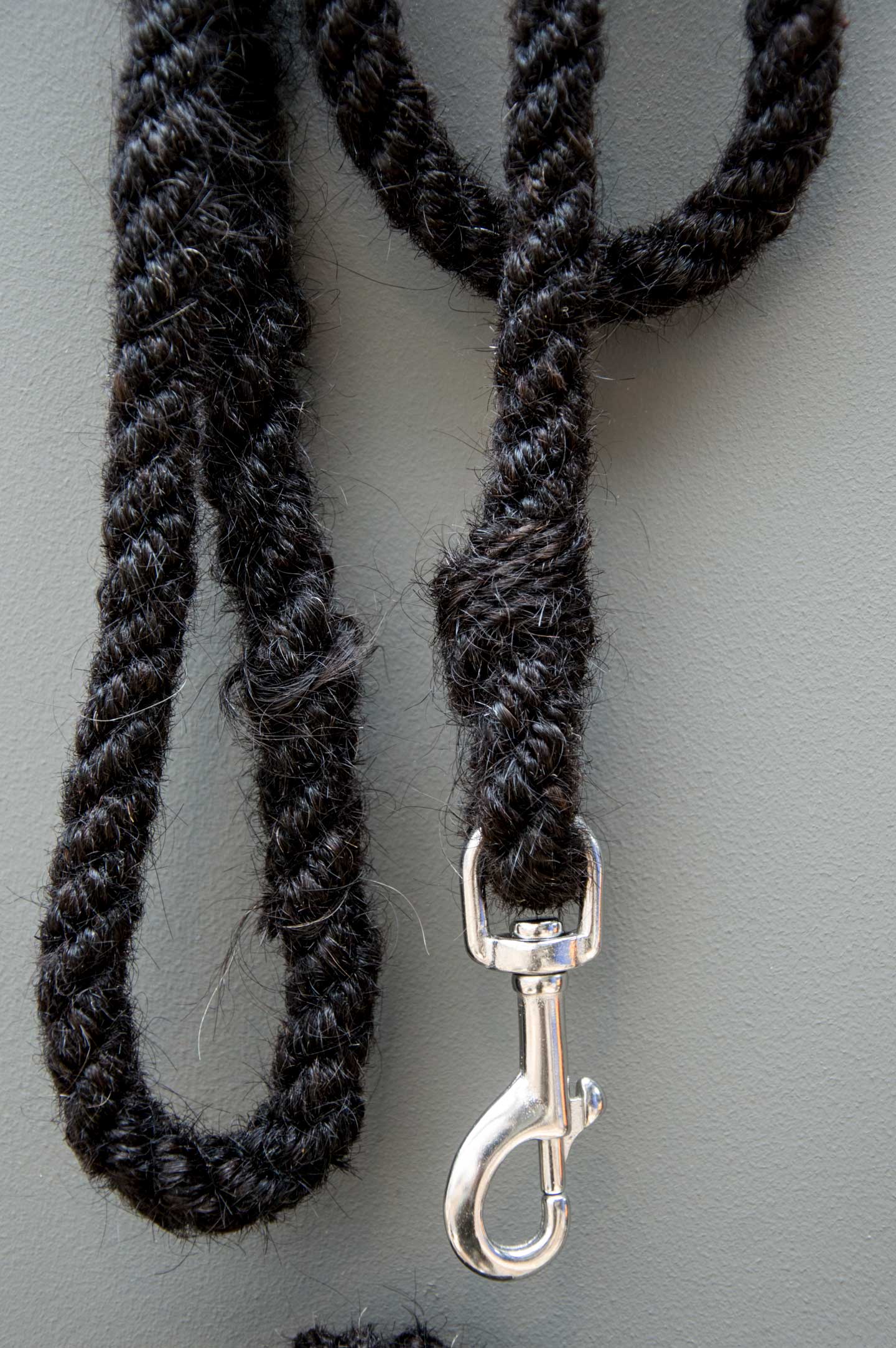
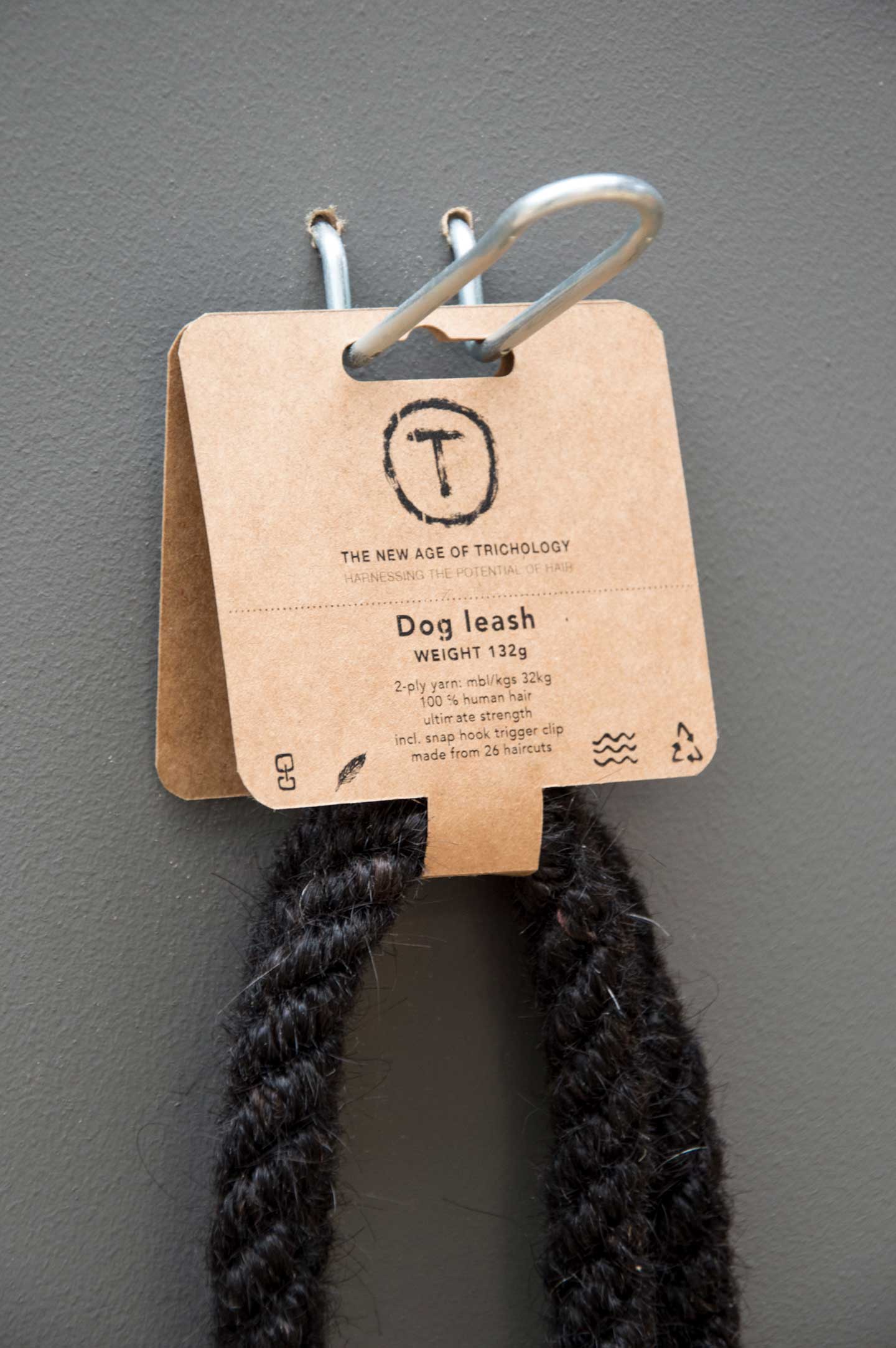
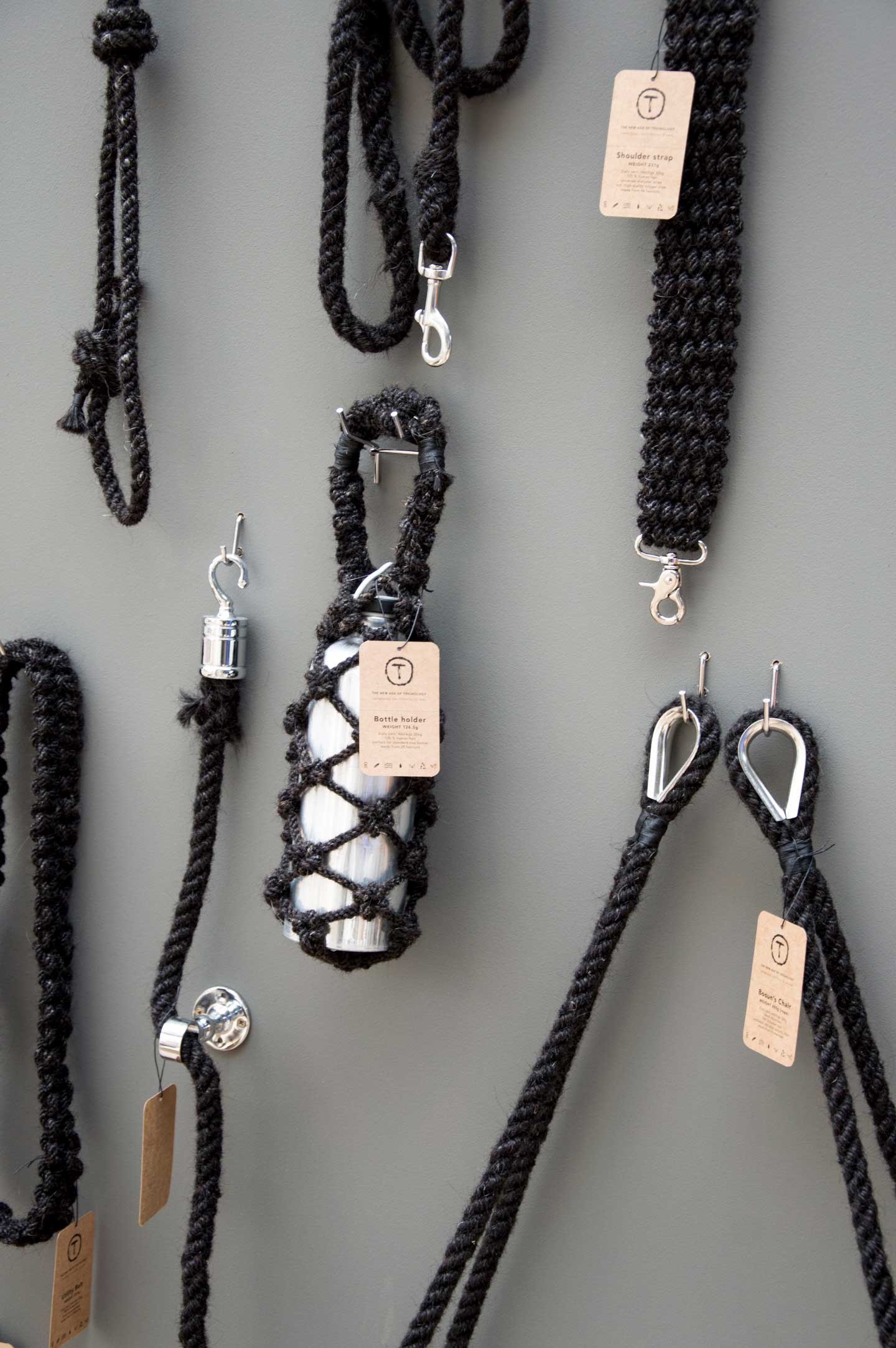
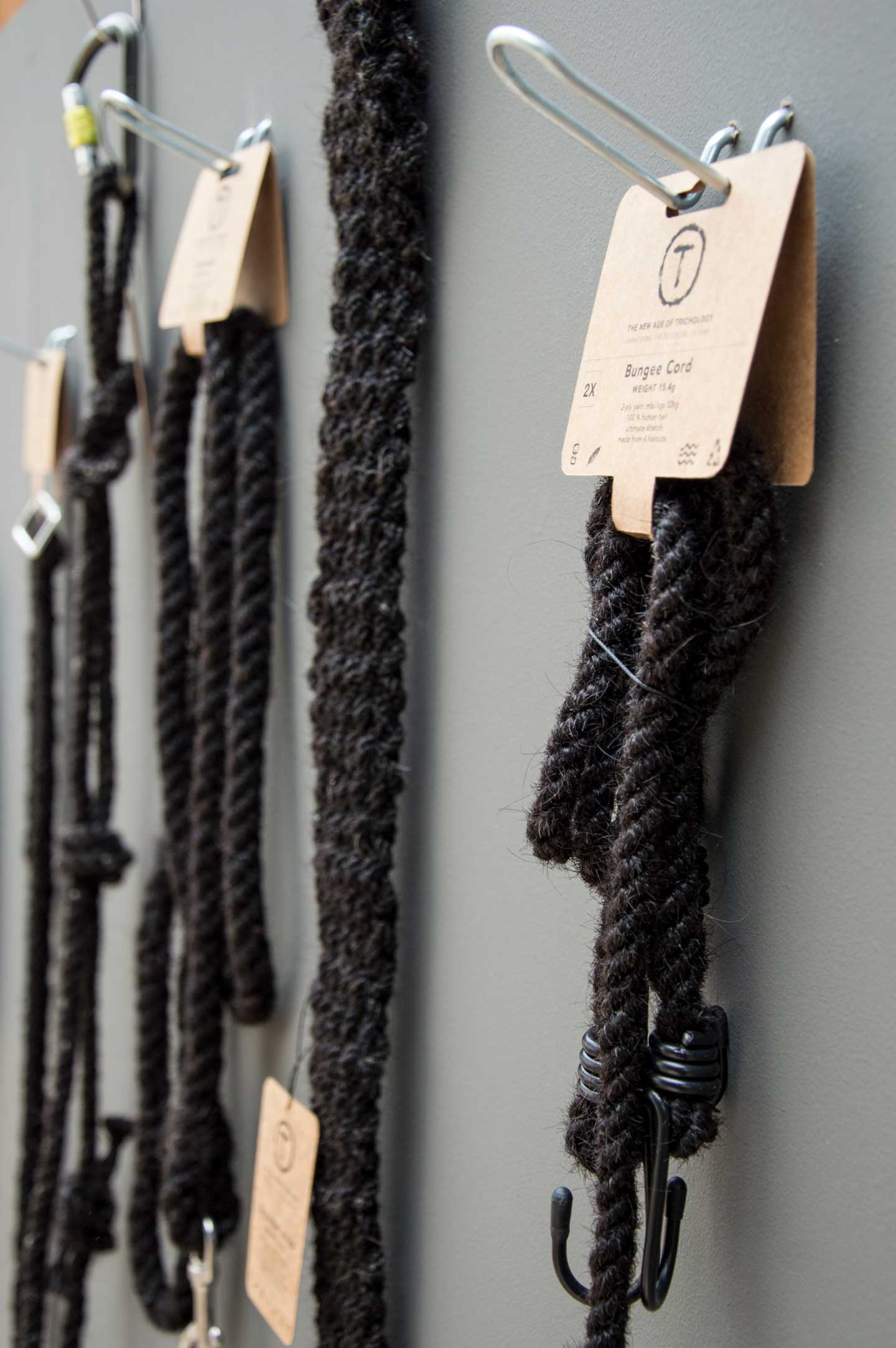
UTILITARIAN PRODUCTS
The New Age of Trichology explores a range of utilitarian products that demonstrate the diverse potential of human hair as a material. The 2015 collection featured innovative designs including a shoulder strap, bottle holder, belts, dogleads, bungee/strapping cords, barrier ropes, and a Bosun’s chair. Each product highlights hair’s incredible strength, flexibility, and lightness, transforming waste into practical solutions.

